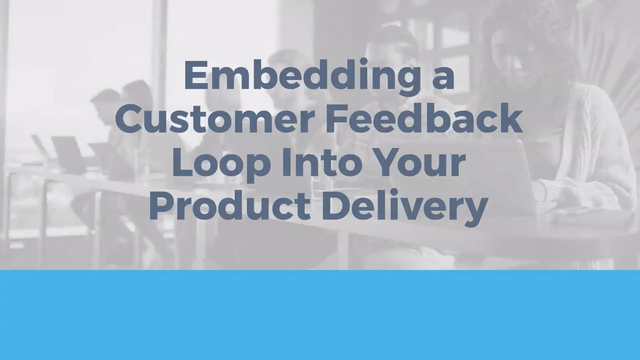Constant feedback is the lifeblood pumping into every successful product delivery. And if you want to unleash a steady flow of products and features that your users love, you have to keep your finger on their pulse constantly. Product feedback loops are the ultimate tool for scanning a user’s experience, pinpointing product shortfalls, and boosting your product.
Wondering how to anchor these feedback loops into your product? Here’s how to embed customer feedback loops into your product, use feedback to enhance product delivery, and drive user-centered growth.
Why build customer feedback loops?
So, why even bother building customer feedback loops into your product? Here are a few key benefits of product feedback loops:
Customer feedback can focus your priorities.
If you’re a product leader or manager, you’re probably slammed with more feedback than you can handle. You need to sort through and prioritize piles of feedback from employees, customers, and stakeholders. Customer feedback loops root your strategy in data that matters. Because it feeds off of user experiences, and users are the main driver of your company’s growth, customer feedback loops can be a guiding light for your product roadmap.
Customers feel valued.
When you listen to customers and incorporate that input back into your product, it can make them feel more valuable. In addition to improving their in-product experience, they feel like their voice has been heard. And that can lift cash flow as well. One recent report found 84% of companies that focus on improving their customer experience reported an increase in revenue.
Feedback reveals user friction points.
If you have roadblocks in your product’s path that hold up users, their feedback should reveal it. By digging into customer feedback and behavioral analysis, you can spot those friction points and clear the way to more engaging products.
Feedback unveils sticky features.
There are golden features sitting in your product just waiting to be discovered. Your users can help you identify these sticky features so you can replicate the best parts of your product.

What does a product feedback loop look like?
Product feedback loops are ongoing processes that are fueled by customer feedback. They’re continuous, so each step relies on the previous step. Here’s an example of the basic layout of a product feedback loop:
- Build product or feature.
- Launch product.
- Measure customer feedback.
- Use feedback to improve.
How do you use product feedback to drive growth?
In the SaaS world, it’s becoming more and more important to improve the user’s experience in order to lift growth. According to Gartner, by 2024, 80% of IT companies will radically change their missions and structure as they lean into product-centered operating models.
When done right, product feedback loops don’t just improve the user’s experience; they improve your entire product and grow your company as a result. To realize this growth, it’s important to incorporate customer product feedback into every stage of your customer growth flywheel, including:
- Onboarding
- Adoption
- Retention
- Growth
How do you embed customer feedback loops into your product?
As valuable as customer feedback loops are, they may be easier to put into motion than you realize. Here are a few key tips for embedding customer feedback loops into your product:
1. Use data to set priorities.
Customers and users are the beating heart of your product. At the end of the day, if your product is meeting their needs, it’s healthy. If it isn’t, your product needs a checkup. By using product feedback to nail down your priorities, you’ll have a solid set of data to back your strategic decisions and guide your product roadmap.
2. Dive into user workflows.
User feedback is about more than the details your users offer up. Their actions will also speak volumes. By tracking user workflows, you can watch how users journey through your product. With insights such as path analysis, it’s easy to see how they move from one feature or workflow to the next. With that information, you can spot friction points, make adjustments, and help carve out more direct paths to your product’s most valuable features.
3. Pepper in strategic engagements.
As you’re analyzing your user’s path, you can proactively eliminate friction points by peppering in in-product engagements, product guides, and surveys. Dropping these product boosters in at strategic points bridges the gaps in workflows, keeps users logged on, and can prevent customer turnover.
4. Let feedback drive product enhancements.
As you’re gathering feedback and data on user behaviors, keep it on reserve for your next project. This valuable information can fuel enhancements to your product and lay the groundwork for your most successful feature or product launches in the future.
Learn How to Measure Success the Right Way
The secret to building product feedback loops that drive growth is gathering the right data and using that info to carve out a better user experience. Once that is accomplished, you must start measuring the right metrics to determine success. Download our white paper and learn how the top SaaS organizations measure success for their product strategies.



